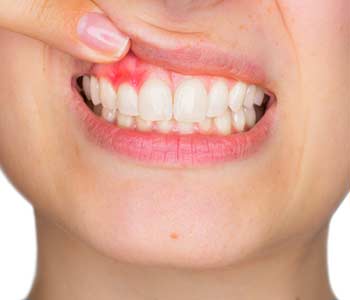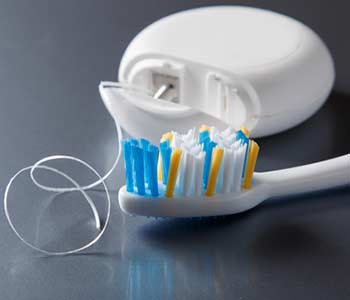Pasadena, CA dentist explains common causes of gum disease, or periodontitis
When you think of a beautiful smile, pearly white teeth may be the first thing that comes to mind, but another important factor in a smile that radiates youthful vitality is having pink, healthy gums. When gum inflammation and disease take hold, gums become puffy and red, and cause other unpleasant symptoms down the road such as loose teeth or even tooth loss. Below, dentist Dr. Marchack of Pasadena Prosthodontics explains common causes of gum disease and how it can be prevented.

Gum disease explained
Gum disease, also called periodontal disease, is incredibly common in the United States – in fact, it is estimated that half of adults over the age of 30 have at least some form of it. Simply put, gum disease is an infection in your gums. The infection is caused by bacteria that grow in areas of plaque that have formed on your teeth. As these bacteria multiply, they irritate the gums and excrete acids that cause even more inflammation and irritation, contributing to a self-perpetuating cycle that causes the disease to worsen over times.
Since gums play an important role in keeping your teeth in place in your mouth and protecting their sensitive tooth roots, when your gums become compromised by inflammation and disease, it can have a cascading effect on the rest of your oral health. As gum disease progresses, the tissues may recede, exposing the tooth roots and causing pain and sensitivity, and eventually your teeth may become loose or even fall out. Patients with gum disease can also suffer from holes in their gums where bacteria have eroded them. Unfortunately, the problems with gum disease don’t stop there – the bacteria in gum disease have been linked to a whole host of systemic health issues that can not only affect your quality of life but also cut it short. Heart attacks, stomach ulcers, diabetes, certain cancers, and other conditions are all associated with periodontal disease. That’s why it is critical to see the dentist regularly for check-ups so you can stop gum disease in its tracks while it is manageable.
What causes gum disease?
The most common cause of gum disease is a build-up of plaque on your teeth and along the gum line due to insufficient brushing and flossing. However, there are other risk factors that can contribute to the development of gum disease.
Genetics: Like many diseases, if your parents or other relatives have gum disease, you may be more likely to get it yourself due to your genetic makeup. When you know that you are more susceptible to developing the disease, you can take extra precautions to ensure your gums stay healthy for life.
Age: The older you are, the more likely you are to develop periodontitis. The CDC estimates that over 70% of people in the United States over the age of 65 have gum disease.
Tobacco use: In addition to other negative health consequences, smoking and the use of other forms of tobacco products are linked to an increased risk of getting periodontal disease.
Schedule an Appointment
Stress: Aside from making it harder to relax and sleep at night, stress takes a toll on almost every aspect of the body, including your gums. When you are stressed, it is harder for your body to fight of infections, and therefore you are more susceptible to the development of gum disease.
Bruxism (clenching and grinding your teeth): When you persistently clench or grind your teeth, typically while sleeping, it puts extra pressure on your gums and can amplify the rate at which periodontal disease progresses. Special appliances are available from the dentist to help prevent these negative effects.
Other factors: Several other factors can also play a role in the development of gum disease. This includes taking certain medications, being overweight or obese, eating a nutrient-poor diet, or having other systemic conditions such as diabetes, rheumatoid arthritis, and cardiovascular disease.
Preventing gum disease

The good news about periodontal disease is that it is largely prevented with good daily hygiene habits. This includes:
- Brushing your teeth after every meal, or at least two times per day, to remove any food, debris, and plaque from your teeth and gums
- Flossing once per day to get rid of food and plaque stuck between the teeth and along your gum line
- Use an antibacterial mouthwash to eliminate bacteria or plaque that brushing and flossing didn’t get rid of
- See your dentist at least twice per year for check-ups; if you are already suffering from periodontal disease, you may need to see the dentist more regularly for cleanings and monitoring of the condition
Integrated treatment for oral health at Pasadena Prosthodontics
At Pasadena Prosthodontics, we don’t just treat a single issue in your mouth. We take your overall oral health seriously and provide comprehensive, integrated care to restore your teeth and gums, and in turn, your overall health and well-being. Whether you feel like your gums are just mildly inflamed or you have noticed signs of more severe gum disease such as loose teeth or gum recession, we are here to help. Call our office, conveniently located in Pasadena, CA, at 855.770.3737 today to schedule an appointment and experience the Pasadena Prosthodontics difference!
Back to Periodontal Disease Page



